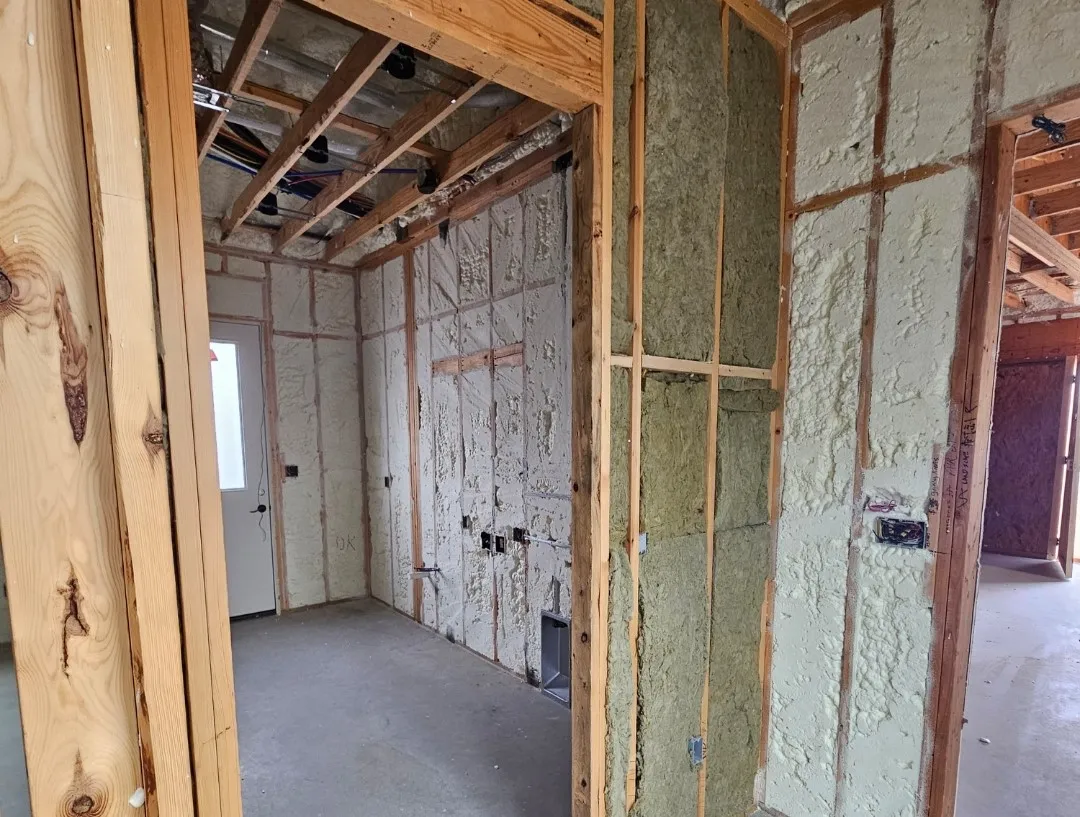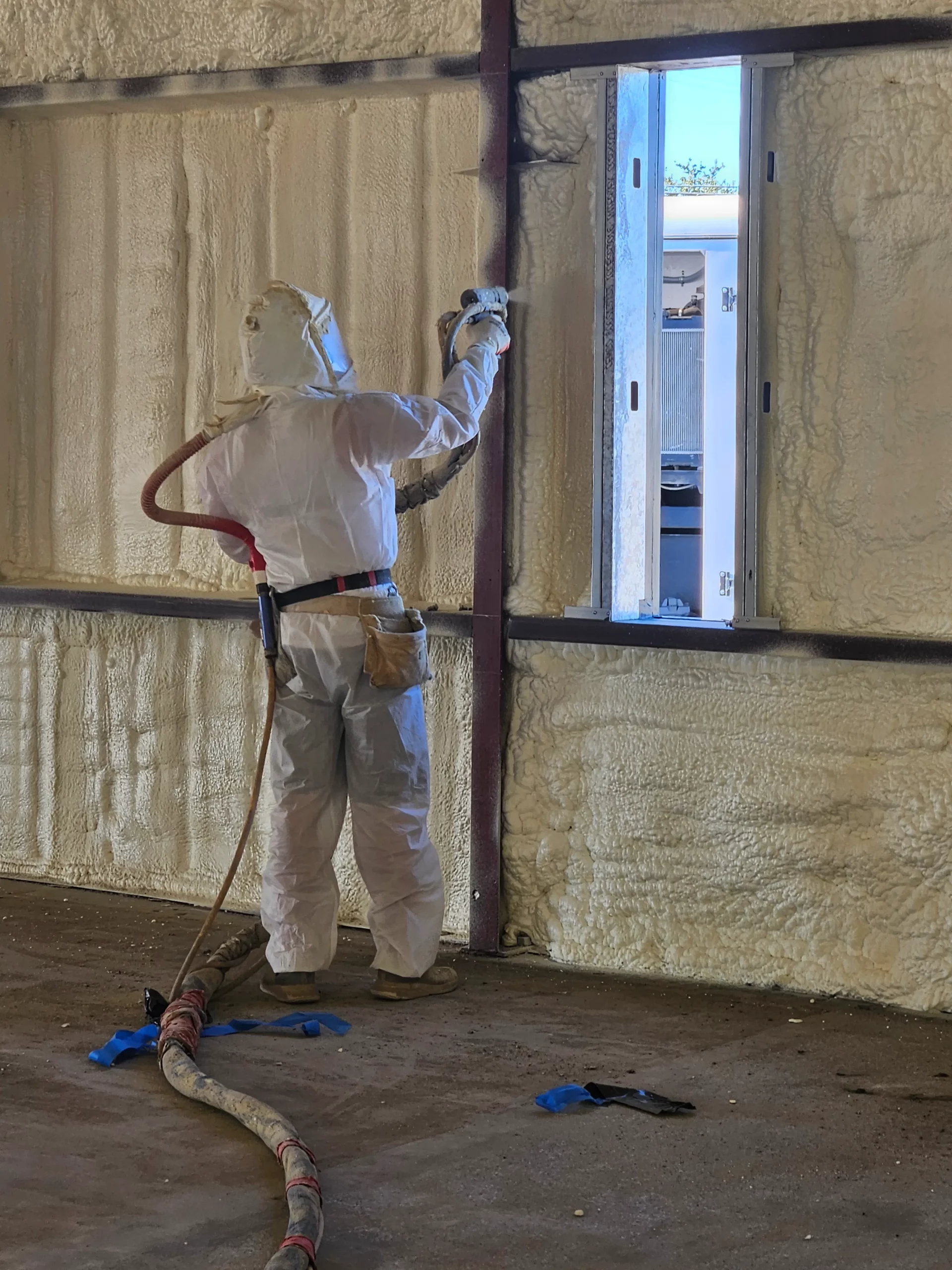

Spray foam insulation outperforms fiberglass in most residential and commercial applications due to superior air sealing properties, higher R-values per inch, and moisture resistance. While fiberglass remains more affordable upfront, spray foam delivers better long-term energy savings and creates a complete thermal barrier that fiberglass cannot match.
The choice between these insulation types depends on your specific project requirements, budget constraints, and performance expectations. Through extensive installation experience across various building types, the performance differences become clear when evaluating factors like air infiltration control, moisture management, and thermal efficiency. This comprehensive analysis examines both options to help property owners make informed decisions based on actual field performance data.
The fundamental differences between spray foam and fiberglass insulation become apparent when examining their core performance metrics. Spray foam creates an airtight seal that eliminates thermal bridging, while fiberglass allows air movement that reduces overall system efficiency.
| Performance Factor | Spray Foam | Fiberglass |
|---|---|---|
| R-Value per inch | 6.0-7.0 (closed-cell), 3.5-4.0 (open-cell) | 2.2-4.3 |
| Air Sealing | Excellent – creates complete barrier | Poor – allows air infiltration |
| Moisture Resistance | High (closed-cell), Moderate (open-cell) | Low – absorbs moisture |
| Installation Speed | Faster application, instant expansion | Labor-intensive fitting |
| Longevity | 20+ years without settling | 10-15 years, prone to settling |
| Fire Resistance | Requires fire retardant treatment | Naturally fire-resistant |
According to the Department of Energy, air infiltration accounts for 25-40% of energy loss in typical buildings. Spray foam addresses this issue directly by expanding to fill gaps and cracks that fiberglass cannot seal effectively.
Understanding the technical aspects helps explain why spray foam consistently outperforms fiberglass in controlled testing environments. The cellular structure of spray foam creates superior insulating properties compared to the loose-fill nature of fiberglass.
| Technical Specification | Closed-Cell Spray Foam | Open-Cell Spray Foam | Fiberglass Batts |
|---|---|---|---|
| Density (lbs/ft³) | 1.7-2.0 | 0.4-0.6 | 0.4-1.0 |
| Vapor Permeability | 2.0 perms at 2″ | 16 perms at 5.5″ | Variable |
| Compressive Strength | 25-30 psi | 1-2 psi | Minimal |
| Thermal Drift | None | None | Significant over time |
| Installation Thickness Required | 2-4 inches | 3-6 inches | 3.5-12 inches |
Bonus Tip: Closed-cell spray foam adds structural strength to buildings, with compressive strength exceeding 25 psi. This dual function as insulation and structural enhancement provides additional value beyond thermal performance.
Regional climate conditions influence insulation performance differently for spray foam and fiberglass systems. Understanding these variations helps determine the most suitable option for specific geographic locations.
In hot, humid climates, closed-cell spray foam prevents moisture infiltration and reduces cooling loads more effectively than fiberglass. The vapor barrier properties of closed-cell foam prevent humid outdoor air from entering conditioned spaces, reducing dehumidification requirements.
Cold climate applications benefit from spray foam’s air sealing properties, which prevent warm air infiltration that can cause ice dam formation. Fiberglass installations in cold climates often experience thermal bridging through framing members, reducing overall system efficiency.
Bonus Tip: Mixed climate zones require careful consideration of vapor barrier placement. Closed-cell spray foam eliminates this complexity by providing both insulation and vapor control in a single application.

Spray Foam Tech delivers comprehensive insulation solutions tailored to residential and commercial applications. Our specialized services ensure optimal performance through proper material selection and professional installation techniques.
Closed-cell spray foam performs exceptionally well in attic applications by creating an air-sealed thermal envelope. This application method brings the attic space inside the conditioned envelope, eliminating ductwork losses and reducing equipment loads. Fiberglass requires careful air sealing of the attic floor and may not address ductwork efficiency issues.
Spray foam installation typically completes faster than fiberglass for equivalent areas. A 2,000 square foot home can receive complete spray foam insulation in 1-2 days, while fiberglass installation may require 3-4 days depending on complexity. Spray foam’s rapid expansion and curing eliminate the cutting and fitting time required for fiberglass batts.
Both insulation types require proper safety precautions during installation. Spray foam generates chemical vapors requiring temporary building evacuation and specialized ventilation equipment. Fiberglass particles can irritate skin and respiratory systems, requiring protective equipment and proper handling procedures. Professional installation ensures appropriate safety measures for both materials.
Spray foam insulation provides superior performance in most applications through better air sealing, higher R-values, and moisture resistance. The initial investment typically pays for itself through reduced energy costs and improved comfort levels. Fiberglass remains suitable for budget-conscious projects where air sealing can be addressed through separate measures.
Evaluate your specific requirements including climate conditions, building design, budget constraints, and performance expectations. Consider long-term energy savings and comfort improvements when comparing options, as these factors often outweigh initial cost differences over the building’s lifetime.
Spray Foam Tech provides comprehensive insulation services backed by extensive experience and proven installation techniques. Our team evaluates each project individually to recommend the most effective insulation strategy for your needs and budget. Contact us at (737) 777-9590 or oldworldtx@hotmail.com to discuss your insulation project and schedule a professional assessment.
Quality spray foam maintains its insulating properties and thickness for 20+ years without settling or degradation. The rigid cellular structure prevents compression and thermal drift common in other insulation types. Fiberglass can settle 10-20% over time, creating gaps that reduce overall system efficiency.
Existing fiberglass should be removed before spray foam installation to ensure proper adhesion and performance. The removal process also allows inspection of air sealing opportunities and structural issues. Spray foam applied over existing insulation may not achieve optimal performance due to uneven surfaces and trapped air pockets.
Open-cell spray foam offers superior sound absorption compared to fiberglass due to its open cellular structure and complete cavity filling. The material’s density and conforming properties reduce sound transmission more effectively than fiberglass batts, which may leave gaps that allow sound infiltration.
Local building codes specify minimum R-values and installation requirements that both insulation types can meet when properly installed. Some jurisdictions have specific requirements for spray foam applications in occupied buildings or require fire-rated assemblies. Professional contractors ensure compliance with applicable codes and standards.


